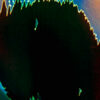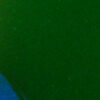In a storage unit in Cergy-Pontoise, in the suburbs of Paris, there is a large cardboard box containing something like fifty Moleskine notebooks, the record of two decades of journaling and note-taking. Though I can’t bring myself to part with them, most of what I’ve written is lost to me. There’s just too much material, in my cribbed, rushed, indecipherable handwriting. I can’t imagine ever having the time or the patience with my past self and her preoccupations to go back through it. And yet in my most optimistic moments, I think there are probably passages in there that I don’t want to lose forever. Whatever impulse prompted me to write it all down in the first place must be, somehow, related to the essential source from which all of my writing springs.
I’m in love with the diary as a record of our joys and wonders. I even love the different terms for it – commonplace book, miscellany, mirabilary, occasional writings, adversaria – a term that’s fallen out of use, but derives from the Latin adversus, or a ‘turn toward’ (often in confrontation). A journal, we learn in Georges Perec’s Species of Spaces, is originally a unit of measuring space; it’s ‘the surface area a farm labourer can work in a day’. I love the diary because it knows itself to be a minor form; it isn’t trying to be anything but. It isn’t constructed, like a memoir; it is life as it happens. They tell us as much about the period the writer lived in as about the writer themselves. Though I can’t quite bring myself to reread my own, I adore reading other people’s, from Sei Shōnagon to Susan Sontag, losing myself amid the different kinds of text jostling together on the page, stories, complaints, lists, dreams, quotes, gossip, stray ideas, conversations overheard. ‘On the whole I concentrated on things and people that I found charming and splendid,’ Shōnagon explains, her notes ‘full of poems and observations on trees and plants, birds and insects’.
Growing up, I understood there to be a strict division between ‘writing’ – that is, novels – and what you wrote in your diary. It took encountering the work of two French writers, Georges Perec and Annie Ernaux, for me to begin to see that the writing that happened in the diary could itself be a means of publicly engaging with the world. Perec’s Attempt at Exhausting a Place in Paris, in which he sat at a café in the Place Saint-Sulpice for three days and attempted to record all the comings and going he saw there – people, birds, buses – was an obvious reference point for me, and a permission-giving text in terms of helping me get outside the usual forms, subjects and procedures for book-writing. But so was Ernaux’s less well-known Journal du dehors, out in English this fall from Fitzcarraldo Editions as Exteriors translated by Tanya Leslie, in which she took notes on the people she saw on the RER train on her commute from her suburban home in Cergy-Pontoise (coincidently, the current location of all my notebooks) to central Paris. In a 2016 essay, Ernaux declares that discovering Perec through his novel Things: A Story of the Sixties ‘was a major inflexion point in the way I understood writing. Or more precisely, [a widening] of the field of possibility for writing.’ Following their example, I was emboldened to think that a diary I kept on my phone on the bus could actually be a book that people might be curious enough to read: No. 91/92, notes on a Parisian commute.
I think it’s no accident that all this writing has been provoked by Paris, a city where the cafe chairs are positioned not so dining companions can face each other, but so they can look out at the street. When I moved there as an undergraduate, I learned that writing did not have to be made-up stories about people who didn’t exist, but could be nothing more, or less, than the transcription of world into text.
These days I hardly ever bring my Moleskine out with me. Instead I use my phone to make a note about something or someone I saw, or to take a picture of something I want to look into later, or screenshots of quotes to transcribe or books I want to read. My handwriting has declined even further, but at least all my ideas are searchable. My phone itself has become my commonplace book. This isn’t ideal – and with enough time and leisure I much prefer writing on paper – but it’s my pragmatic reality.
Sarah Manguso, another compulsive journal-keeper, writes in Ongoingness: The End of a Diary that she kept her diary ‘so I could say I was truly paying attention.’ This is the approach I used in my bus diary, a thousand years removed from Shōnagon’s pillow book. A sticker on the wall of the bus advised commuters to be careful of their phones, not to lose them or let them be stolen. Your telephone is precious. It may be envied. We recommend vigilance when using it in public. I decided to take the RATP’s advice and be vigilant when using my phone – that is, I would use it to carry out a ‘public transport vigil,’ using the phone to look at the world, rather than ignoring the world by losing myself in its screen. Maybe the phone note is a new entry in the expansive history of the diary, a widening of the field of possibility for writing. The phone diary is a way of being alive; of not missing out on life, of not letting it go past us; a way of looking out the window. The bus journal is still a means of covering ground. It is the purest form of attention.
Image © Daniel Friedman








